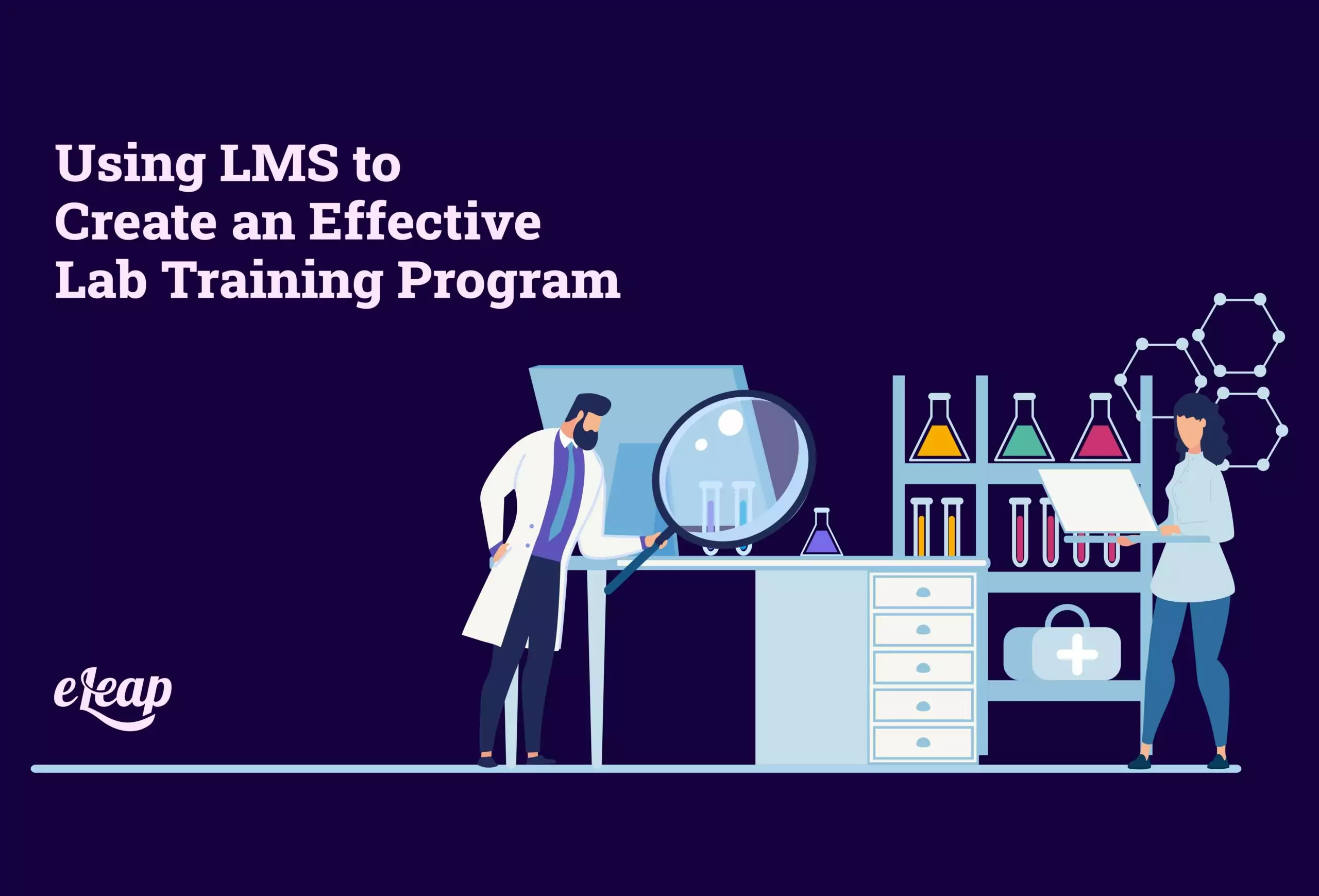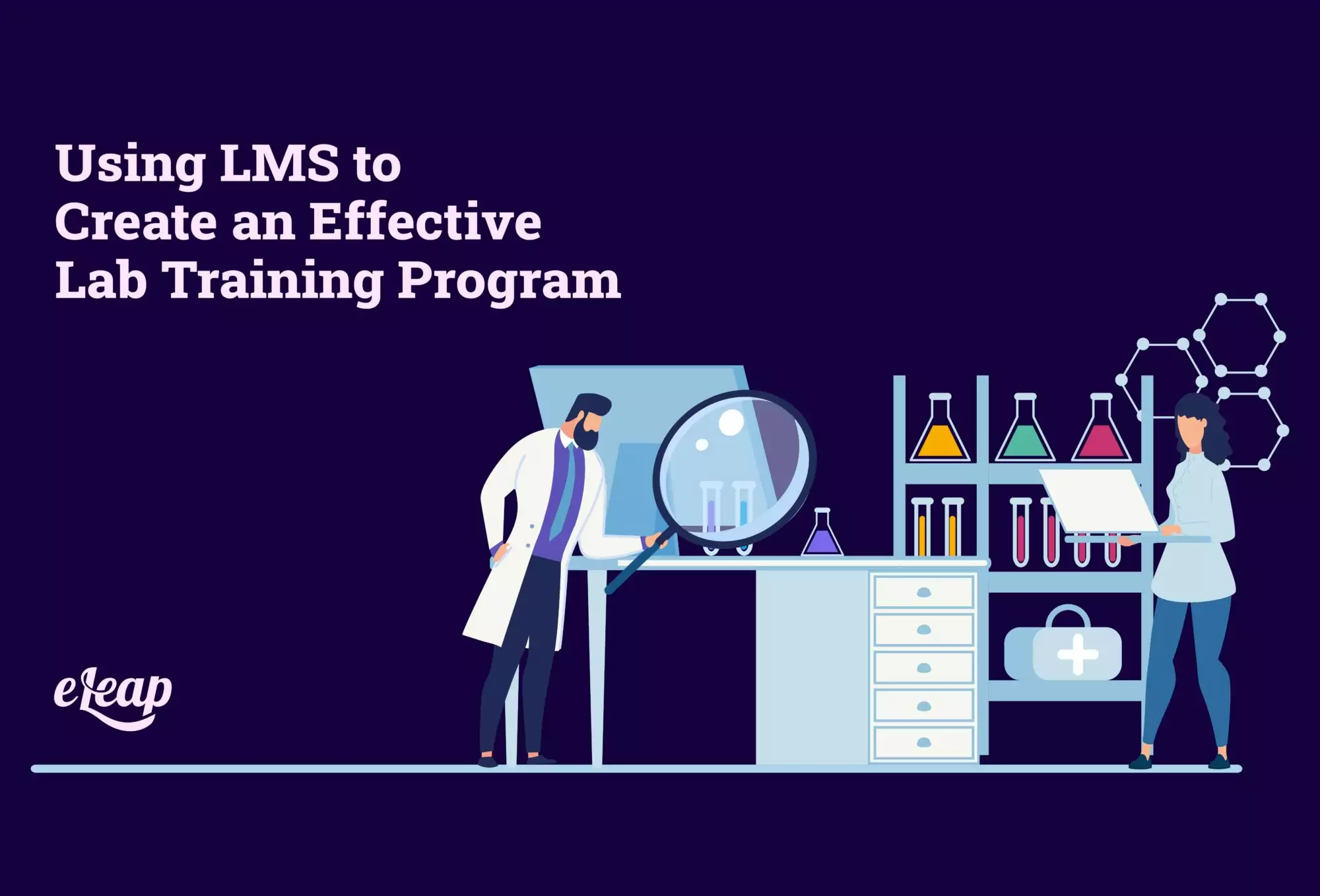Using LMS to Create an Effective Lab Training Program

Working in a medical lab is extremely meticulous. Each different procedure and test requires a specific form of training program and an understanding of how to maintain the proper environment for these tests.
Having the ability to implement a training program that meets the demand of a constantly changing industry can be a game-changer. To create the most effective training program, you have to be proactive in what your lab’s training needs are. Leveraging the power of training networks is important, as well as breeding an atmosphere of continuous learning.
The right LMS program can assist with all of these dynamics in any medical lab or research program. In an industry where change happens quickly and the demand for precision is high, it’s almost mandatory that the right LMS is present for onboarding employees.

Identifying Training Needs
Adapting to changes by altering your training program is key to staying competitive in a technologically advanced market. Using data-driven approaches is one of the best ways to identify what needs to be changed in your training courses.
Using an LMS to examine where students are having issues or which exams and modules are presenting challenges can clue instructors into what material should be covered better. After identifying these trouble areas, instructors may alter the course material accordingly. These changes can include:
- Making modules more graphics-based
- Including more hands-on learning
- Breaking courses into smaller segments
- Include more video chats to connect with students
Your LMS program will allow you to implement all of these changes at any time during use. Additionally, when new technology surfaces in the medical lab industry, a gap analysis can be conducted to determine where new material has to be added.
When new material is implemented in a training program, it can be a process of trial and error. A gap analysis can show you where you are lacking and where you can eliminate certain elements. This gives you the ability to make your course structure as efficient as possible and make the best use of your and your students’ time.
Defining Objectives
In a medical lab setting, the objective is the most important part of the entire process. When you conduct lab research or a test, your objective is defined as the end results of that test or research. Different labs and tests have different end objectives.
The same can be said about lab training and certification. What are your end objectives for each course or module in your training program?
What is the takeaway for each student for a particular course? Learning outcomes and objectives need to be communicated between students and instructors.
These objectives can be defined as organizational or industry-wide. Organizational objectives can be implemented on a course level to develop a more uniform process company-wide. Industry objectives are mandatory for meeting regulations and rules within the medical lab world.
Instructors can get students to buy into organizational objectives by providing clear outlines of what is expected of them and giving them insight into the benefits. Message boards, forums, and group chats can be used to discuss the importance of these objectives.
Upper management and various instructors can communicate these objectives as well. Using each other’s input regarding end results for courses is very important. Having a collective vision for employee onboarding and training is vital for the efficient functioning of an organization.
Networking to Create Training Programs
Using expert networks and third-party insight can be helpful when you’re creating a training program. Data and advice obtained from third parties and outside networks can be logged and analyzed once this information is added to the course material.
You can utilize the effectiveness of guests and other third parties becoming involved in lectures and training sessions. Using video chat is the perfect way to leverage the advantages of these methods.
A good mix of internal and external learning sources is a great way to help students and employees understand and overcome challenges present within your industry and organization. Using a different network’s expertise in the various subject matters can give you the boost you need for your training program.
Visual Learning
Medical lab employees will participate in hands-on work for the duration of their workdays. Having a visual understanding of the equipment that is used and the processes of certain lab procedures is vital. Visual learning elements can provide the following benefits:
- Using videos and photos to prepare students for hands-on work
- Visually diagram lab equipment to gain insight into how certain instruments work
- Using charts to reference certain data
Having the ability to implement a visual element in your training program can substantially increase the quality of your student’s learning experience. These benefits become extremely important when new technologies or procedures surface and new visual material must be uploaded quickly.
Continuous and Uniform Learning
Once a particular method or training module has proven to be effective, it’s important to continue the implementation of this exact model. Having a uniform process is important in a medical lab, as the environment and steps must be controlled.
Having a good LMS program will allow you to sustain the continuous methods of learning and model successful course outlines. This is true for students and teachers.
Competency-based training is a great way to keep employees and students engaged during the learning process. Using outdated management and learning techniques can drive your employee satisfaction rates down, which is extremely bad for retaining your staff.
Using cutting-edge, new, and exciting methods will keep staff and new employees excited about participating in your organization. Implementing a proven system that works for training medical lab employees can help your organization gain notoriety and establish you as an authority in your industry.
Everyone from student to teacher can benefit from the many features of a quality LMS program. In an industry where technology moves fast, it’s important to keep up with the demand for learning.
Using an LMS to develop your training program and course outline allows you to keep your training uniform and continue with what works. It’s also easier to track student progress and gain insight into which areas need more attention. These practices are the best ways to ensure your training program is developing the most efficient future employees possible! Contact us today for your free consultation.